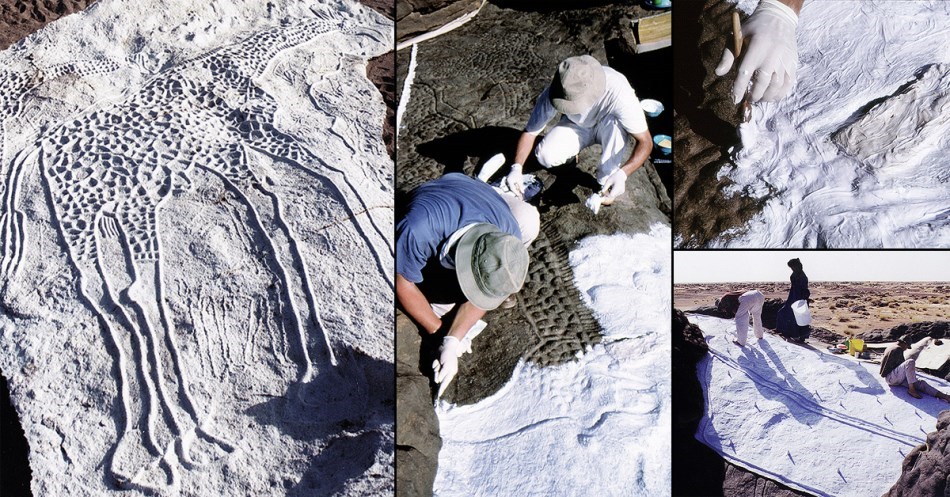The two life-size giraffe petroglyphs, known as the Dabous giraffe, are the largest known animal carvings in the world. Despite their remote location in the Sahara, the prehistoric rock art was inevitably attracting attention.

The two giraffe, one large male in front of a smaller female, were engraved side by side on the sandstone’s weathered surface. The larger of the two is over 18 feet tall, combining several techniques including scraping, smoothing and deep engraving of the outlines. However, signs of deterioration were clearly evident.

Despite their remoteness, the site was beginning to receive more and more attention, as these exceptional carvings were beginning to suffer the consequences of both voluntary and involuntary human degradation. The petroglyphs were being damaged by trampling, but perhaps worse than this, they were being degraded by grafitti and fragments were being stolen.
This was to attempt to preserve them, not only because of their artistic significance, but also their placement within a palaeo-African context ie. a greener Sahara. This preservation would take the form of making a mould of the carvings, and then cast them in a resistant material.

According to bradshawfoundation








